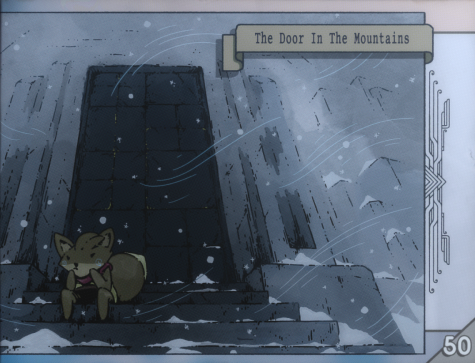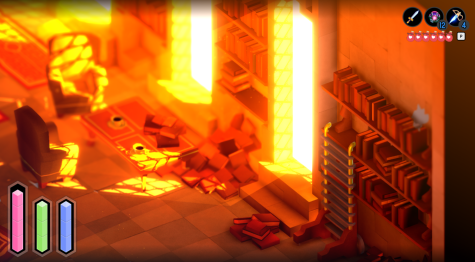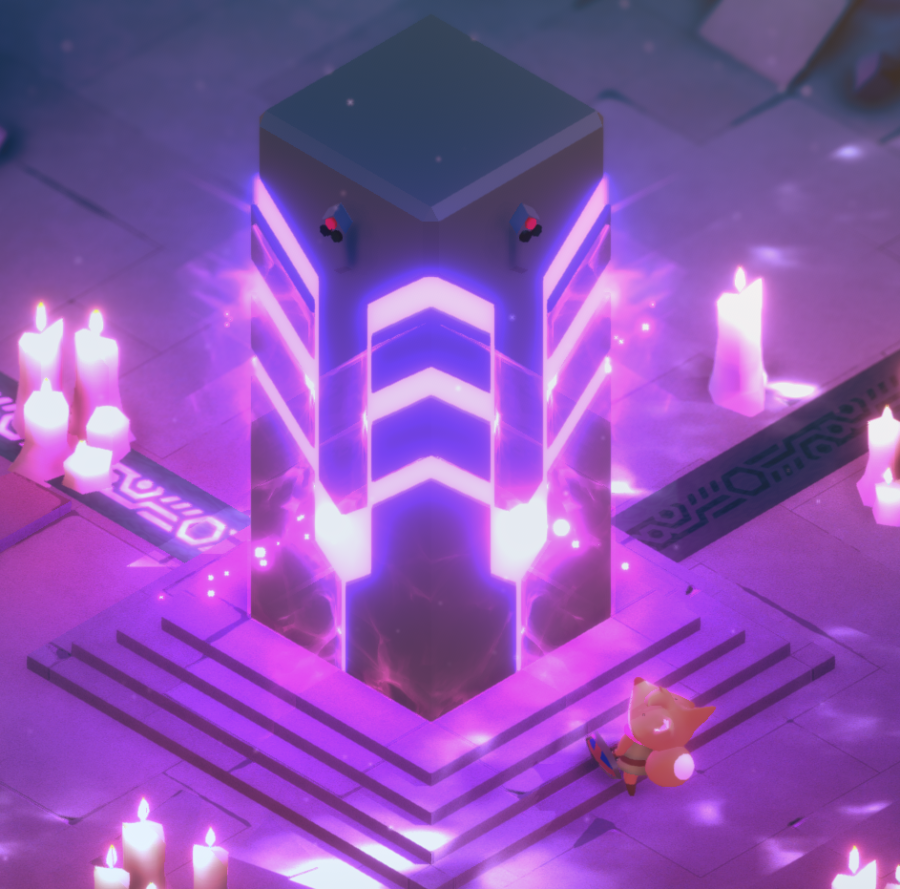Tunic: Always Another Path
You wash ashore in the magical world of “Tunic” and start making your way inland. Immediately you are taken in by the game’s simple, soft art direction. It has an unrealistically cute aesthetic that draws people in. The first thing the game lets you read is a mailbox, but when you attempt to read it, it’s indecipherable. It’s written in an in-game language that is currently unknown to you. “Tunic” is an isometric action-adventure game that draws you in with lo-fi tunes, incredible style, challenge, and mystery.
From the moment you start the game up, it is impossible to look past the obvious inspiration being the “Legend of Zelda” series. From the little tunic your character wears to the game’s opening that reminded me of the first time I played “Link’s Awakening” on the Gameboy Color. Designer Andrew Shouldice’s other inspirations for “Tunic” are a little less obvious but range from “Super Mario” to “Myst” and to the “Dark Soul” series. These are some games that all have varying levels of difficulty and mystery but also games that don’t explicitly give you direction. “People like mystery, people like not knowing” is what Andrew Shouldice told Vice Media podcast “Waypoint Radio”
Some of that shows up in the gameplay, which boils down to combat and explorations. The combat has a stamina system in it, with a parry, and some dodges. The exploration requires some curiosity and some willingness to go “Okay, what is around this corner that I can’t really see”. Tunic’s combat can be exhilarating when you can piece it together correctly but also when you throw it all together and just try to make it out of a combat sequence. The game does a great job of never making you feel like you are at a loss of items. That being said sometimes “Tunic” can be a hard game like “Dark Souls”, it can be daunting even. It does a good job of offsetting this pressure by having nearby shrines that you respawn or heal at. When you heal in the game all your in-game items get restored as well but all the non-boss enemies respawn too. The difference between this game and the “Dark Souls” game aside from the difficulty is that “Tunic” penalizes you for dying but it never punishes you. For example when you die in “Dark Souls” sometimes the journey back to where you were can be treacherous and defeating. In this game you often respawn rather close to where you died, you only lose 20 gold pieces that can be regained when you come across your soul again, and even clicking on your soul is another tool that will cause nearby enemies to be pushed back from you. These little things make it less discouraging to die and take chances in combat. The game also has accessibility options like a “No Fail Mode” and a “No Stamina Restrictions” for players that just want to enjoy the game without the stress of its combat.

The game isn’t all combat, it is mostly Mystery and investigation. Putting things together, like the in-game manual that only has a few words that you can read in English. The manual never seems like a laugh in the player’s face, like a “Ha you can’t read this” but another exciting puzzle to figure out. You have to read into the context of each page, and then applying what you inferred into the world always feels like a win. Maybe it’s the amazing art in it that makes me hope for an actual printing of it one day.

It can be difficult to put down “Tunic” because of its exploration. Just when you feel like you are running in circles or into a wall, you’ll notice something new. You will see a new path, a corner you haven’t tried, or a waterfall you can walkthrough. You receive a new item that can help extend your journey. It’s a game that never gives you a direct answer, and it makes for something that will always have you looking for the next mystery. To Learn and explore are Tunic’s main objectives.
“Tunic” has a way of bringing that childlike wonder back to video games in a world where we have the internet. This is a feeling that Shouldice admits is “very trite” The internet has ruined surprises, but this game and even what it’s about have been able to be in a shroud of mystery since it was announced in 2018. It’s an action-adventure game that is doing way more than being another rouge-like game or trying to make cheap use of nostalgia as a way to bring you in. It’s a fully realized world created mostly by one developer that is sending you a lo-fi invitation to explore.
Anthony Grecco is a Staff Writer for The Hawkeye
Anthony Grecco was born in Rhode Island, but spent his formative years in Fayetteville, North Carolina....

